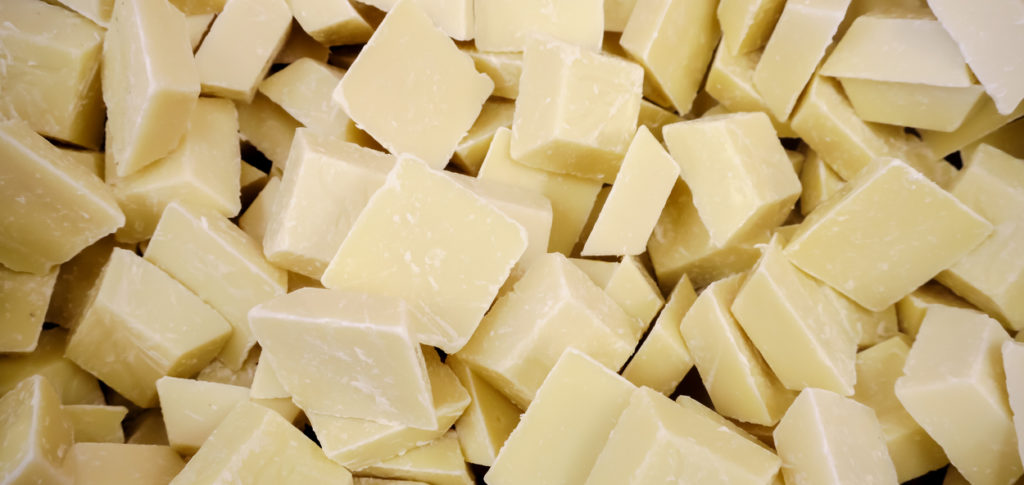
There are a lot of mis-named things in this world.
Grape nuts aren’t nuts. Panama hats are made in Ecuador. Jellyfish aren’t actually fish.
And there’s no chocolate in white chocolate. So…what IS white chocolate?
In a world where chocolate rules the dessert roost, white chocolate is sort of the black sheep – or maybe the white sheep – of the chocolate family. In this blog post, we’ll look at where it comes from and how it’s different than milk or dark chocolate candy.
Why isn’t white chocolate a chocolate?
One of the things that makes our Montgomery County chocolate actual chocolate is the presence of cocoa solids. White chocolate, meanwhile, is typically made from milk, sugar and a stabilizing ingredient known as lecithin, along with cocoa butter.
And while cocoa butter has “cocoa” in its name and comes from cocoa beans – just like dark or milk chocolate – it doesn’t contain cocoa solids.
After cocoa beans are harvested, they’re fermented, dried and shelled. The chocolate nib inside that shell is then mashed into a paste to make chocolate liquor. From there, the liquor is divided into two forms: cocoa solids – which gives our chocolate its flavor and color – and cocoa butter, which is basically a flavorless fat.
Due to this lack of flavor, cocoa butter gets added to sugar, milk and lecithin to create the sweet, smooth taste we associate with good white chocolate.
According to FDA regulations, white chocolate must contain at least 20 percent cocoa butter, 14 percent milk solids and 3.5 percent milk fat (and no more than 55 percent sugar or other sweeteners).
Dark chocolate candy, meanwhile, typically has between 45 to 80 percent cocoa, which gives it its dark color. Because of its deep and somewhat bitter flavor, it’s often referred to as “semi-sweet” chocolate.”
Dark chocolate candy is also considered a “healthier” chocolate than its milk and white counterparts, containing antioxidants and – according to some studies – improving heart health and circulation.
Milk chocolate contains all the ingredients we described above, along with vanilla. It has much less cocoa than dark chocolate, giving it a lighter appearance, creamy texture and sweeter taste.
The origins of white chocolate
The history of white chocolate is up for some debate. There are some who claim it first appeared in New Hampshire after World War I, created by an American who’d sampled white chocolate while in Europe.
Nestle sold the first white chocolate bar in the 1930s, creating white chocolate as a way to use up excess cocoa butter. (Who actually came up with that idea is a detail that’s been lost to history.)
Nestle’s Alpine White bar was the first mass-marketed white chocolate candy bar in the United States, introduced after World War II. It was a popular item for decades but has since been discontinued. Several other big candy-makers have since introduced white chocolate offerings of their own.
But we’re not here to talk about them. At Skip’s Candies make our own, handmade chocolate, whether you’re in the mood for our white, milk, dark chocolate candy varieties. We’ve operated a dedicated nut-free facility since 2011, ensuring that our chocolate can be enjoyed by all.
If you’re reading this, you might be seeking a last minute holiday gift. Browse our online store or visit today to get a taste for yourself. And happy holidays from everyone here at Skip’s.

